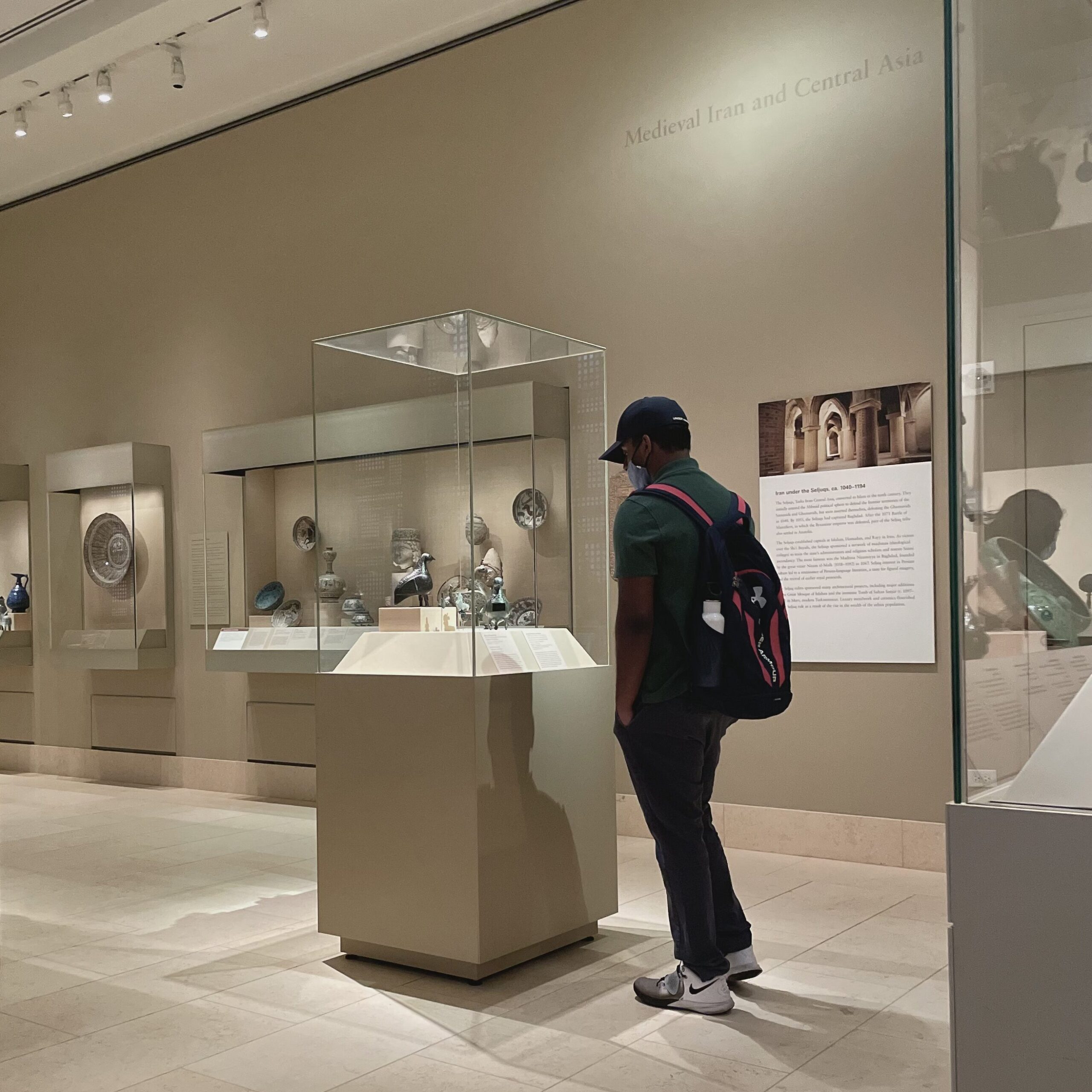As someone who has loved museums for as long as I can remember, it feels heretical to even admit that my own brother considers most museums to be boring. The older sister in me has not let this go easily, and, in fact, I’ve been practicing my art of persuasion through getting my friends and family into museums even when they are hesitant. If you, too, are hoping to convince someone to join you at a museum or maybe are looking for a way to get more out of museums yourself, here is some of my hard-earned advice.

1. Turn it into a game
The easiest museum game (if it can be considered one) is to identify your favorite work in a gallery and what makes it your favorite. But you can also do way more; I’m not sure if I should post this publicly, but on a recent visit to the Met, I may have spent most of my time playing a fake game of “dibs” with two of my friends. Three 20 year olds rushing from room to room whisper-shouting about who saw the coolest sword in the room first is probably not the image most people have of Princeton undergrads, but it was some of the most fun I’ve had at a museum with friends. Coming up with games, even if that just means debating which artifact in a room is likely the most expensive, is one of the easiest ways to enrich your museum experience by encouraging you to look at objects in new ways.
2. Bring your friends with really niche interests
Some of my favorite museum visits have been ones that I’ve taken as part of classes here at Princeton. I find that I am able to get infinitely more out of the collections with the opportunity to speak to my classmates and professors while browsing. Of course, this kind of experience is not easily accessible – not to mention one that I will miss when I graduate. You probably know someone, however, with a deep interest in some topic that you know very little about yourself. Taking a trip to a museum with even a “recreational” expert on a topic can make the experience twice as fun, as their enthusiasm will be contagious. If reading item descriptions isn’t for you, having someone to talk to is another great way to get the most out of an exhibition you might otherwise overlook. Or, you can take a tour with a docent!
3. Give it the same attention you would if you were looking at the Mona Lisa
The nice thing about looking at works that do not generate suffocating crowds is that you can look at them for as long as you want. When you find piece you really like, push yourself to stand in front of it for as long as possible. Get up really close. Then, take ten steps back and inspect it from far away. Especially if it’s behind a thin piece of glass (which can sometimes create glare), try looking at it from different angles. Better yet, stand and talk with a friend about it and take photos. You might end up amazed by the crowd that will be drawn and the comments you’ll overhear. This one’s not so much of a museum learning hack as it is a fun experiment, but I encourage you to try it out the next time you visit a museum. I only discovered it by accident after spending 30 minutes with my mom in front of a single print that I was writing a paper on, only to be swarmed by people who assumed our attention made it the highlight of the collection (nope, just a personal favorite!). Most art historians would likely tell you that 30 minutes is not anywhere near enough time to see a piece if you really want to write about it. With that being said, I think that even 10 minutes with a single piece would be a great place to start when it comes to exercising your close-looking muscles.
4. Use your phone to see objects in new ways
In my last post, I talked about how my camera roll is overflowing with pictures from museum trips. While photos are the foundation I use to build up research papers after leaving a museum, they are also a great way of reframing objects in the moment. Especially when looking at sculpture, I love taking photos as a way of encouraging myself to catch new details. A photo you previously took of a really cool work can also be the tipping point the next time you are convincing someone to visit a museum with you!
I hope these tips give you a boost of encouragement to plan your next trip to a museum. Happy exploring!
— Kate Weseley-Jones, Humanities Correspondent

